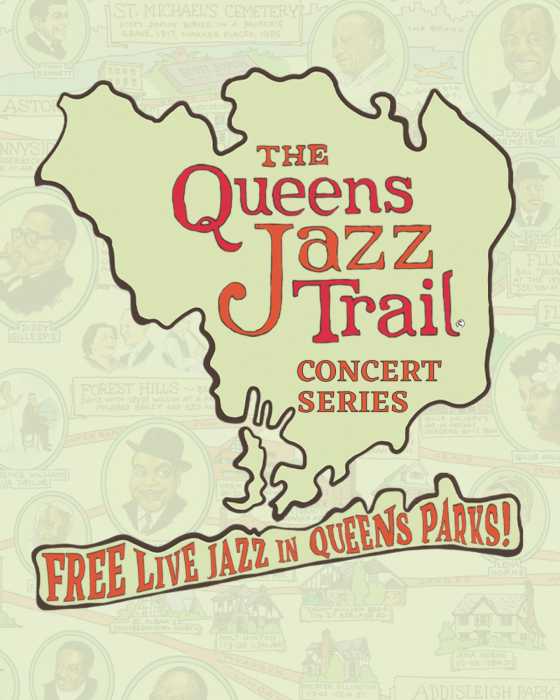
Williamsburg Bridge (photo by Global Jet via Flickr/Creative Commons)
Oct. 26, 2017 By Nathaly Pesantez
A push is underway to rename the Williamsburg Bridge after the prolific jazz musician Sonny Rollins, now 87, who at one time disappeared during a career high in the late 1950s to take a transformative two-year sabbatical on the bridge.
The Sonny Rollins Bridge Project, started by jazz enthusiast and former non-profit worker Jeff Caltabiano in March 2017, aims to commemorate Rollins and bring attention to his sabbatical from 1959 to 1961, when the then 28-year-old would practice up to 16 hours a day on the bridge’s pedestrian walkway while taking up a string of self-improvement measures, including yoga, exercise, and giving up smoking.
“I’ve always known the story,” said Caltabiano, 42, who lived two blocks from the Williamsburg Bridge in the Lower East Side for 13 years. “The thing about it is that it was usually about one to two sentences,” the jazz fan of 20 years said.

Sonny Rollins in 2011 (photo by tom.beetz on Flickr/Creative Commons)
The sparsely-recorded sabbatical lay dormant on Caltabiano’s mind until April 2015, when at 85, Rollins wrote a short account of his time on the bridge for the New York Times. “That’s when I got obsessed with it,” Caltabiano said. “From that moment on I thought about him every time I went over the bridge.”
But a photo of the Williamsburg Bridge posted on Instagram by jazz musician Ken Vandermark, which reads, “It’s still Sonny Rollins’ bridge to me,” was the turning point that kicked off the Sonny Rollins Bridge Project. “It changed my thinking,” Caltabiano said. “I shuddered. I was like, I need to make this official.”
Caltabiano launched initial efforts of Instagram, gathering domestic and international press along the way. He offered his perspective on the bridge as a symbol for Rollins’s longevity, and says the musician’s reasons for taking the two-year sabbatical were more than artistic.
“He went to the bridge at a time when it was really tough to be a jazz musician,” Caltabiano said. Recent interviews and articles are aiding Caltabiano’s understanding of the saxophonist’s sabbatical as an escape from a scene plagued with problems like drugs, alcohol, and racial tensions in a pivotal time for the genre.
A May New York Times piece on Rollins’ personal archive, for example, shows a 1959 newspaper clipping on Miles Davis’s beating by police officers. Months prior, Rollins wrote to Jazz Times that his 1958 “Freedom Suite” should have been included in their sidebar on jazz as social protest. “In the modern jazz era, that was the first record that reflected the civil-rights period,” Rollins wrote.”That was the first that I know of.”
Caltabiano says the Williamsburg Bridge is a metaphor for needing to take the time to heal and reflect. “He became a different person when he went up on that bridge. He said I need to take a time out—Rollins was literally and figuratively suspended on that bridge.”
The Sonny Rollins Project eventually got the attention of Councilmember Stephen Levin a couple of months ago. Caltabiano met with Levin in his office in May, and flat-out asked him if he would sponsor a bill to change the bridge’s name. Levin agreed.
“The story of Sonny Rollins and the Williamsburg Bridge is a distinctly New York cultural story,” Levin said in a statement. “It is a tale of transformation and transcendence.” Levin, who first listened to Rollins at the age of 13, said New York City is lacking in monuments dedicated to cultural pioneers. “In some ways this city serves the same purpose as the bridge did for Sonny. People come from all over, leaving everything behind to become something more.”
Caltabiano has also been in talks with Borough President Eric Adams about the project.
Rollins, who carries a 70-year career, has asked not to be involved in the project. “He is a humble and sensitive man,” Caltabiano said, adding that he has been in touch with musicians Clifton Anderson and Eric Wyatt, Rollins’s nephew and godson, respectively, about the project.
Caltabiano has seen a growing interest in the project since its inception, but is also aware of some resistance that the effort has received. “The main push back that I’ve heard is that I’m going to be ruining history,” he said. “Quite the opposite. This is not renaming the bridge because he’s a great man or musician—it’s a metaphor for his life.”
“Sometimes in our life we need to take a bridge,” he added. “You don’t need to be a jazz fan to understand that.”





